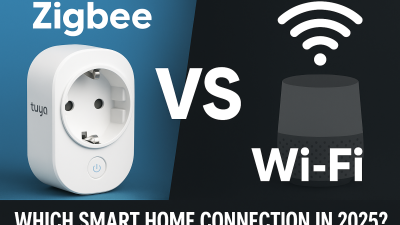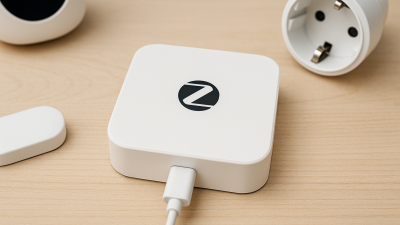Zigbee vs Z-Wave vs Wi-Fi: Choosing the Right Smart Home Protocol
When building a smart home, one of the most overlooked — yet critical — decisions is choosing the right communication protocol. Zigbee, Z-Wave, and Wi-Fi dominate the landscape, each with its own advantages and limitations. In this guide, we’ll break down the technical differences and real-world considerations so you can make an informed decision tailored to your smart home goals.
Understanding Smart Home Protocols
A communication protocol determines how your devices talk to each other. Some rely on your home Wi-Fi, while others create their own mesh networks. The three main contenders — Zigbee, Z-Wave, and Wi-Fi — have different architectures, range capabilities, power consumption, and device compatibility.
Zigbee: Fast, Open, and Widely Supported
- Frequency: 2.4 GHz worldwide, with some sub-GHz options
- Range: 10–20 meters indoors
- Topology: Mesh
- Pros: Low power, fast response, wide manufacturer support (e.g., Tuya, Philips Hue)
- Cons: Potential interference from Wi-Fi; not ideal for long-range unless many devices are present
Zigbee is ideal if you’re using a wide range of smart devices and want excellent speed and responsiveness. Its open standard and wide adoption make it very future-proof.
Z-Wave: Reliable and Low Interference
- Frequency: Sub-GHz (varies by region)
- Range: Up to 30 meters indoors
- Topology: Mesh
- Pros: Less interference, excellent stability, strong mesh capabilities
- Cons: Fewer manufacturers, slightly higher device costs, regional frequency limitations
Z-Wave shines in homes where Wi-Fi congestion is an issue. It’s a good option for users focused on stability over cutting-edge speeds or the latest device variety.
Wi-Fi: Ubiquitous but Power-Hungry
- Frequency: 2.4 GHz / 5 GHz
- Range: 30+ meters depending on router strength
- Topology: Star (all devices connect to router)
- Pros: No hub required, easy setup, great for bandwidth-heavy devices (e.g., cameras)
- Cons: Higher power usage, possible network congestion, limited scalability
Wi-Fi is perfect for entry-level setups or smaller homes. Devices like Tuya Wi-Fi plugs or bulbs are affordable and simple to install, but they can bog down your network over time.
Tuya’s Role: Supporting All Three
Tuya has embraced a multi-protocol approach. Whether you’re using Zigbee, Wi-Fi, or even Matter in the future, Tuya’s platform aims to be universal. Their gateway devices often support Zigbee or BLE mesh, and Wi-Fi-only products are plentiful for budget-conscious users.
Which Should You Choose?
It depends on your needs:
- Beginner / Small Setup: Start with Wi-Fi devices. Easy, affordable, no hub needed.
- Scalability: Choose Zigbee for mesh networking with fast response.
- Network Stability: Go with Z-Wave if you already experience Wi-Fi congestion.
Final Thoughts
No protocol is inherently better than the others — it’s all about the ecosystem you’re building. Tuya’s flexibility allows you to start with what’s simple and scale smartly. Whether you prefer plug-and-play or long-term scalability, choosing the right protocol is the foundation of a successful smart home.



